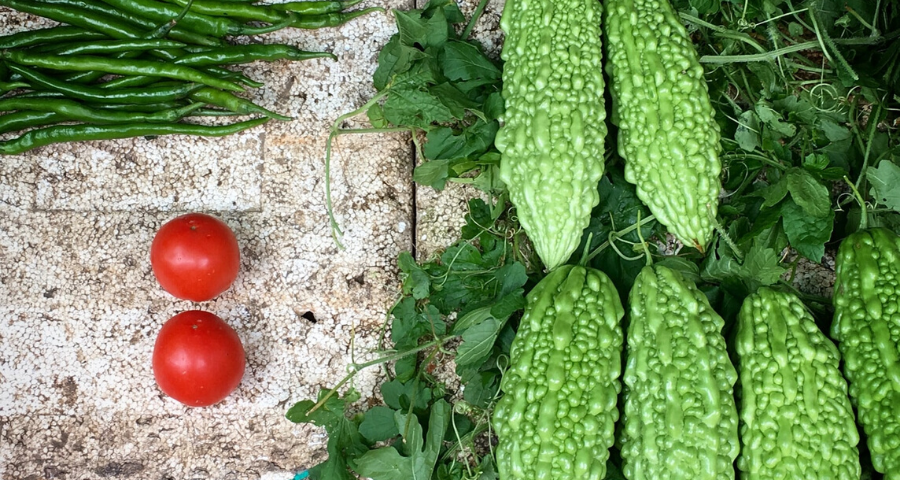With the world’s largest population and a long history of famines, food security has been a longstanding concern for Chinese people. As the COVID-19 pandemic continues and concerns about global food supplies grow, China appears to slowly be getting back to normal and its food system shows signs of resilience. What can be learned from China’s experience?
A decentralised production system
Although China’s agriculture has made great strides in recent decades, it is still only partially modernised. There are about 550 million farmers in China today cultivating 13.5 million hectares of farmland[1] - mostly in small plots – making China’s agricultural system highly fragmented and decentralised. Chinese farmers have been organised around a unique land tenure and planning system. One example is the ‘rice bag project’ which mandates governors to build local grain production and supply systems to ensure food security.
China has achieved basic self-sufficiency in the major staples of rice and wheat. The country’s grain output was 610 million tons in 2018, growing by 160 million tons over 1996. This yield increase has fostered resilience in the food system by generating large grain reserves. In fact, China has sufficient grain reserves today to meet its domestic needs for about one year. Unlike in developed countries, China’s reserves are largely policy driven and owned by the government, often incurring criticism for distorting the market. At the same time, substantial grain reserves have proved important in ensuring the country’s food security.
The ‘vegetable basket project’ is another effort made by the Chinese government to secure non-staple food supplies in big cities. Having over 130 cities with a population of at least 1 million, vegetable supplies have been a serious challenge for city governments. One typical element in the ‘vegetable basket project’ is to maintain a minimum area of vegetable fields in cities. In Beijing, the government has provided about $1000 per hectare in subsidies to farmers for vegetable production since 2015. Much of these vegetables are grown in greenhouses. China is both the largest vegetable producer and user of greenhouses in the world. These measures have also helped ensure food security and pre-date the COVID-19 crisis.
By building a local and decentralised food production system for staple and non-staple foods, China has been able to maintain resilience and reliability of supplies in its food system. Even during the COVID-19 crisis, people could largely rely on local food supply chains. Another advantage of this approach is that if the risk of food shortages rises in one place, it may not easily spread to other places. This is important in light of the issues faced by some other countries, such as the prospect of meat shortages in the U.S., the world largest agricultural exporter, due to outbreaks of COVID-19 in meat processing plants.[2]

The digitalised marketing and distribution system
During the time that many of China’s cities like Wuhan were under lockdown for several months, their local food distribution systems experienced serious disruption. For instance, over 400 wholesale food markets in downtown Wuhan and about 70% of food retailers were forced to close.[3] Complaints about high grocery prices were common. Across the country, agricultural wholesale prices and the consumer price index (CPI) both hit their highest levels since 2015 in February, due to dual pressures from Spring Festival and COVID-19.
During the initial months of COVID-19, a critical response in China was to fully leverage big-data technology and e-commerce to increase mobility in the food system. For instance, a ‘health code’ system which records locations and close contacts of freight drivers allowed healthy drivers to pass through quarantined areas, transporting vital supplies of agricultural inputs and food. There were more than 2 million deliverymen within a ‘no-touch’ supply system during the lockdown. With support from these deliverymen, consumers could order takeout/fresh food through mobile apps and didn’t need to go to supermarkets. Robots were also used for food delivery in hospitals and quarantine hotels to reduce infection risks.
The e-commerce market in China which now has more than 600 million users has played a vital role in dealing with the crisis. Apart from existing e-commerce platforms like Taobao or JD (China’s Amazon), new online supermarket and grocery shops emerged rapidly, and many of them were transformed from traditional supermarkets. These platforms help to cut down retailing prices by reducing intermediate transaction and logistic costs. They have also initiated campaigns to enable consumers to support isolated farmers. For example, immediately after lifting of the lockdown, large amounts of crayfish were sent to consumers through online markets from Hubei province (the centre of the epidemic). This ‘farm-to-table’ food system helped enormously to ease the impacts of the lockdown. It also helped farmers to find ready markets for their produce.

The diversified structure of traditional Chinese diets
The diversity of diets and food culture in China has both positive and negative impacts on the food system. Chinese people have learned to cook dishes with a huge number of ingredients, many of which are not well known outside China. To some extent, this has helped build the resilience of China’s food system, enabling Chinese people to get through tough times as well as adding to dietary diversity. At the same time though, the consumption of wildlife has brought health risks, as has been clear with SARS and COVID-19. Many exotic animals such as pangolin has been used in Chinese traditional medicine and sometimes as food, but in certain cases such as bats this has been exaggerated in the media.[4]
Meat consumption in China has grown rapidly in recent decades and was three times greater per capita in 2018 than it was in 1990. Although Chinese people consume a considerable amount of meat, per capita consumption levels are still only about half that of the US. Moreover, many Chinese people could substitute away from meat quite quickly if need be. The reason behind this is that traditionally Chinese people have had a diverse and balanced diet, which included a lot of seafood and plant protein such as tofu. In fact, interest in plant-based protein sources and discussions on traditional diets has been growing.[5][6]
Implications: decentralisation, digitalisation and diversification for resilience
China’s size and large population means that the country needs a decentralised and diversified food system to ensure resilience. A centralised food supply chain may be more vulnerable to disruptive events like COVID-19.[7][8] China can help ensure the resilience of its food system through decentralisation, digitalisation and diversification.
Zhao Haijun is Food and Land Use Coalition (FOLU) China Project Manager for the World Resources Institute (WRI) China Food And Natural Resources Program.
Seth Cook is Associate at the Food and Land Use Coalition (FOLU). He has extensive experience of food, agriculture, development and environmental issues in China and South Asia, with additional experience in Zambia, Ethiopia and Indonesia.
References
- China National Statistics Bureau website, accessed in 2020
- https://www.bloomberg.com/news/articles/2020-06-09/outbreaks-at-60-u-s-…
-
According to Li Guicheng’s presentation in the ‘Rethinking China and Global Food and Nutrition Security During COVID-19’ webinar held on June 2, 2020.
-
https://observers.france24.com/en/20200204-china-debunked-coronavirus-w…
-
https://www.mintel.com/blog/food-market-news/protein-and-produce-in-a-p…
-
Hendrickson, M. K. (2015). "Resilience in a concentrated and consolidated food system." Journal of Environmental Studies and Sciences 5(3): 418-431.
-
Seekell, D., et al. (2017). "Resilience in the global food system." Environmental Research Letters 12(2): 025010.
